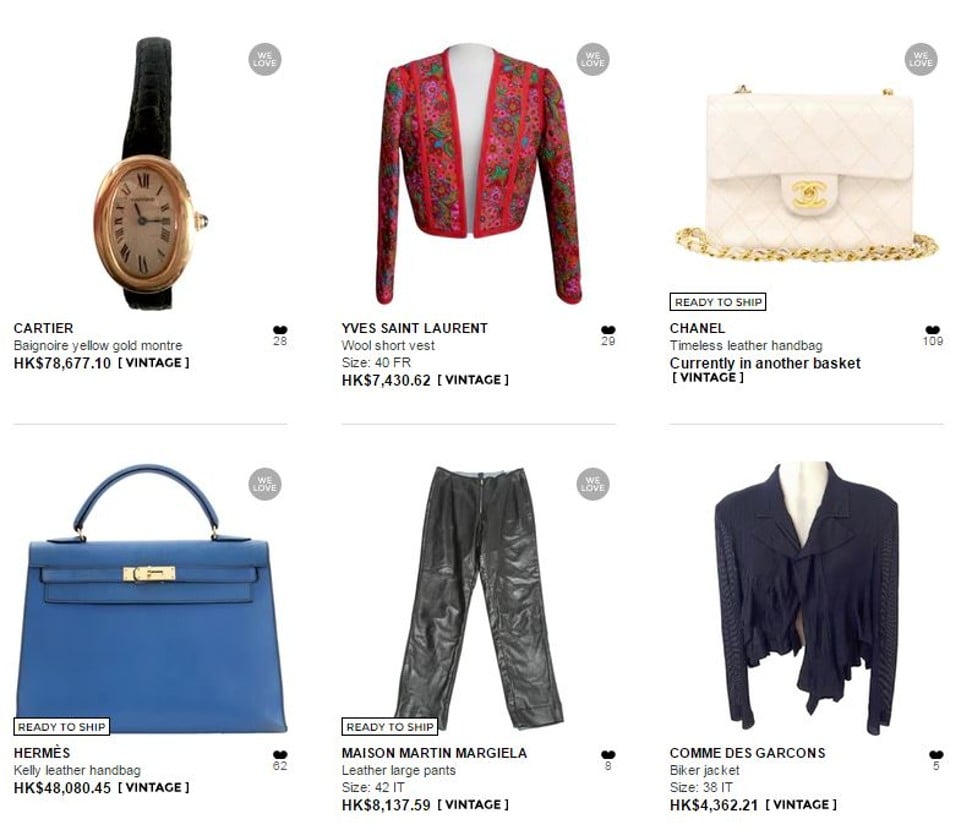
How vintage e-commerce sites like Vestiaire Collective are disrupting the luxury market
Vestiaire Collective co-founder Fanny Moizant explains how vintage adds to luxury, rather than diminishing it, and why the company is expanding to Asia

The size-eight Gucci heels you just bought off Vestiaire Collective may be the only thing more unattainable than an Hermes Birkin bag.
The six-million-strong e-commerce platform sells vintage luxury items that are available in one size and for a limited time only, offering a rarity that parallels the exclusivity of this season’s new luxury offerings.
Vintage luxury goods have gained significant popularity in the digital age, and the definition of value has evolved, causing disruption in the luxury goods market.
We caught up with Fanny Moizant to discuss Vestiaire Collective’s launch in Asia – and learned why she’s making Hong Kong her new home.
How has the online luxury environment evolved since you first found Vestiaire Collective?
The big players are in Hong Kong and growing massively. Net-a-Porter and MatchesFashion are going global and innovating. There are also newcomers to the game – I’m sure you saw the LVMH announcement recently about 24Sevres.com.
For me, it’s good news: it means the consumer is moving towards digital luxury, and it’s now easier to buy a luxury product online. We are also moving ahead in the creation of a luxury experience online.
There are also challenges to selling luxury online, particularly with the second-hand market and the need for a trusted website. We have even more challenges within the niche second-hand market than the big players.
How do you ensure luxury goods retain value without a brick-and-mortar store?
It’s all about the experience that you create on the website, so we pay a lot of attention to its look and feel. We also do a lot of events, and really try to put a person behind the brand.

Why did you decide launch your Asia operations in Hong Kong?
Hong Kong is where it all happens, in terms of luxury and fashion. Knowing that China is on the rise, Hong Kong is a perfect central location. When the headquarters of big powerful brands are here, and they’re not in Singapore or somewhere else, that’s the place we should be.
Can you tell us about your decision to move to Hong Kong?
Five years ago I moved from Paris to London and I did that – and am doing that again – for two reasons.
On a professional level, it’s very hard to spread the DNA of the brand. And there’s no better way to exchange that than to be on the ground.
But I also moved to understand the market. I don’t believe in launching in a new country from outside because, although I can read books or speak to experts, until I really experience the place and meet the people, I won’t get it.
I love the part of my job that is building the first layers of something. I’m a mother and I love to nurture my kids. And I think it’s that experience of being able to start something again and again from the start that I love. I’m not the kind of person who loves to manage big teams. I love those early days, when you challenge yourself, you learn more and you see your baby growing.
As vintage “re-commerce” is a burgeoning industry, what makes Vestiaire Collective stand out?
Vestiaire is unique in that we were among the first ones to launch in the industry, in 2009. I think we disrupted the second-hand market by building the company on three pillars.
The first one is trust. We built our expertise and in-house knowledge. From a 50 euro T-shirt to a 1,000 euro bag, we check and authenticate absolutely all the products.
The second element was creating something inspirational. We only want the best in our catalogue, and have a digital team of curators who receive more than 4,000 products submitted by the community of 6 million every single day. Their work enables us to refuse 30 per cent of what is submitted. Our aim is to build the most edited and desirable inventory possible. We listen to our members a lot, and we know what sells and what doesn’t.
The third and final element is the community. We really think that there is no-one who can explain the products better than the seller. So it’s important for us that behind every pair of shoes there is a woman, or a man, that will add another level of engagement, because fashion is something that we love to share and discuss. We have a big audience that visits everyday – not especially to buy or sell, but to engage and see what’s trending.

Why do online shoppers opt for pre-owned rather than new models – other than price point?
It’s about access. It could be about an accessible price, but there’s also access to different locations via the site. If I live in the south of France, there’s no Chanel shop, but I’m able to find that product online.
Then there’s access to sold-out pieces. There may be a pair of shoes that you wanted desperately to buy, and they still haunt you. Suddenly you find them in amazing condition at a lower price online.
We’ve found that there’s an emotional element too, which is tied to savvy and smart shopping. When you visit the site everyday, you see there are a lot of novelties and every piece is unique. It’s a treasure hunt, an experience that is very emotional, and at the same time very smart – for reasons of price and sustainability.
How much resale do you get on the site? And to what degree to users treat the site as an on-demand service?
Vestiaire is part of the sharing economy system. If you look at the previous generation, my mother and grandmother, they used to buy one coat and keep it for almost a lifetime. While I don’t buy 10 coats a season, I buy way more coats then my mother, for example.
If you look at that behaviour, we’ve moved away from a possession era, to an era of usage. You want something fast, because you’ve seen it and you love it. But then you want to use it and let it go. So the pace is way faster.
On the website, sometimes, it’s almost a renting situation. The curators see items having a second, third or fourth life all the time. Because the definition of luxury is that it holds its value across time, but also across users.
How can Vestiaire Collective add to “re-commerce” in Asia?
I know in Asia there’s a big appetite for fashion and luxury. I was curious to find that in our industry there’s not one big player. One of my purposes is to understand why. What makes this market so different?
The appetite is here for luxury, but also for digital. There’s also a very big interest in detoxing wardrobes. We are living in small spaces, but we still want to have new things. So at some point you have to close the circle, and we help to make the industry sustainable.